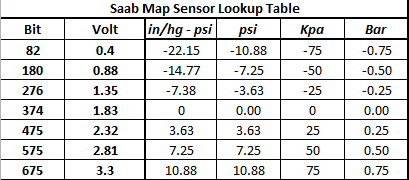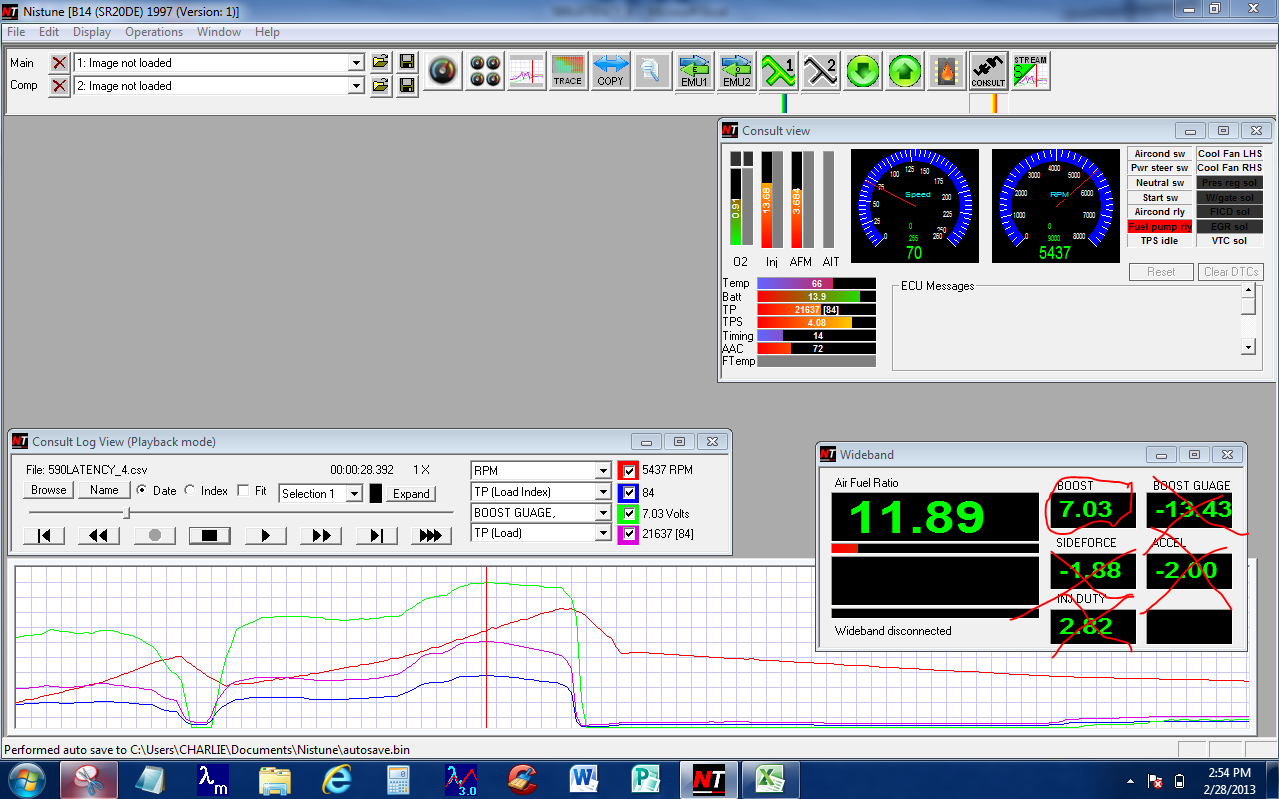Ok I installed my SAAB MAP Sensor so I could rear positive boost pressures just a while ago and did a few runs, the following is actually a pull from around I think ~2.2k to about ~6.7k, I dont know but my MAP sensor curves follows TP Curve very nicely and as expected when tp increases so does map and vise versa, atleast its consistantly inconsistance by a couple TP.
I have it set to log in/hg to psi so the vacuum part of the log wont be as linear as if I had it log -psi to psi

Engine: USDM SR20DE(T) 9.5:1
Turbo: GTi-R T28
Intake: My own creation 3" piping with Apexi Dual Funnel Intake
Injectors: S15 448cc @ 3bar
Intercooler: FMIC and piping my own creation
Downpipe: 2.5" my own creation
Exhaust: Stock Cat-Back (for now)
Wideband: Innovate LM-2
MAF sensor: Z32
MAP sensor: Stock Nissan NA Map sensor for logging purposes (will upgrade to 3bar) NOW SAAB MAP SENSOR
Water Feed: Custom
Oil Feed: Custom

I have it set to log in/hg to psi so the vacuum part of the log wont be as linear as if I had it log -psi to psi

Engine: USDM SR20DE(T) 9.5:1
Turbo: GTi-R T28
Intake: My own creation 3" piping with Apexi Dual Funnel Intake
Injectors: S15 448cc @ 3bar
Intercooler: FMIC and piping my own creation
Downpipe: 2.5" my own creation
Exhaust: Stock Cat-Back (for now)
Wideband: Innovate LM-2
MAF sensor: Z32
MAP sensor: Stock Nissan NA Map sensor for logging purposes (will upgrade to 3bar) NOW SAAB MAP SENSOR
Water Feed: Custom
Oil Feed: Custom

Last edited by UNISA JECS
on 2013-02-28
at 23-31-32.








 Be the first to like this post.
Be the first to like this post.

 Back to top
Back to top
